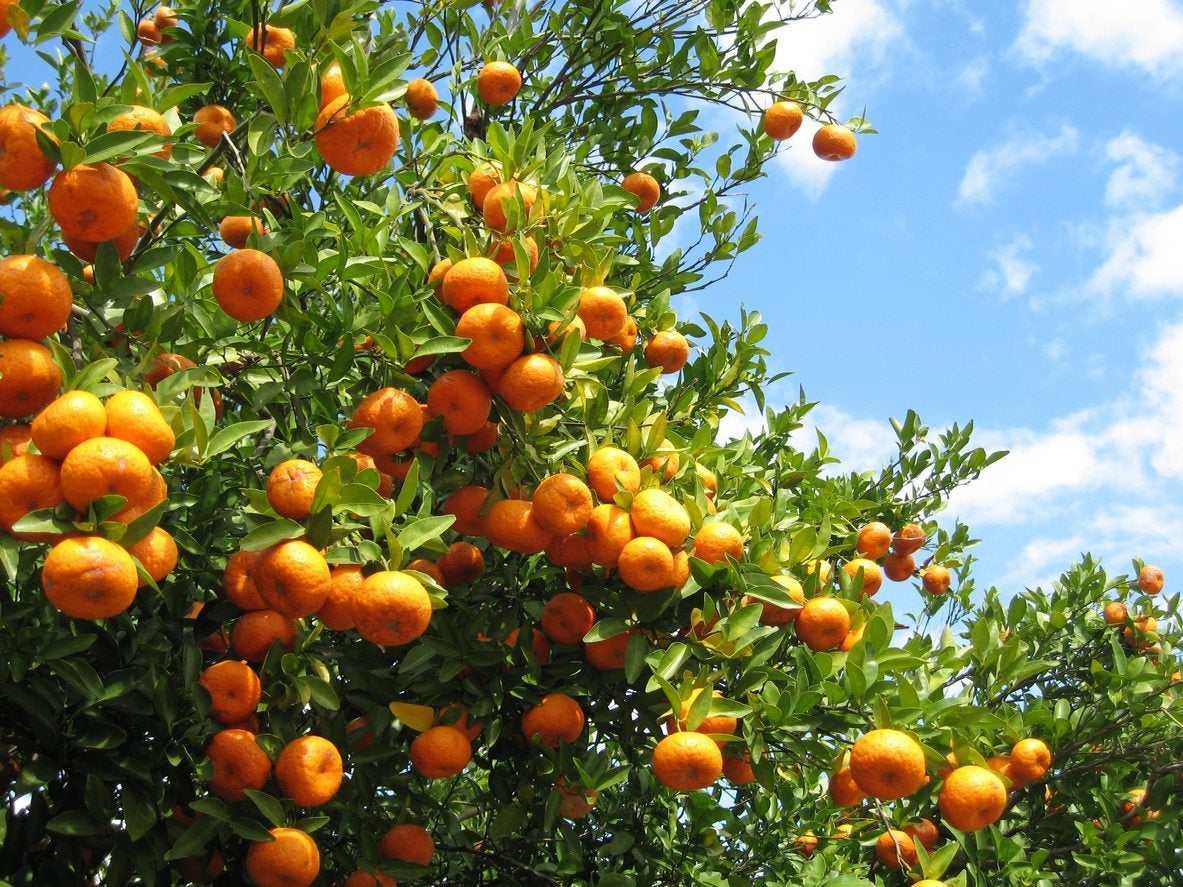Zone 9 Orange Trees: How To Grow Oranges In Zone 9

I am envious of those of you who live in zone 9. You have the ability to grow all sorts of citrus trees, including a multitude of orange varieties that grow in zone 9, that I as a northern dweller cannot. Folks born and raised in zone 9 are rather inured to the fact that they can easily pluck citrus from trees in their backyard. How about northern transplants to these sun filled regions? For those folks, read on to find out how to grow oranges in zone 9 and other information about zone 9 orange trees.
About Orange Trees for Zone 9
Yes, citrus abounds in zone 9 and there are a number of reasons for this. First of all, in this thermal belt, weather is affected by both coastal and interior weather patterns. Dry, hot air is the order of the day, but cool, moist air is pushed inland from the coast. This results in hot summers with rare winter frosts. Zone 9 gardeners can look forward to a growing season that starts in late February and lasts through the month of December. Winter temps can range from 18 to 28 degrees F. (-8 to -2 C.), but zone 9 rarely receives frost. Also, rain is plentiful from November to April, averaging 2 inches (5 cm.) per month. Lastly, this region has very hot summers with constant sunshine during the peak growing season. All this adds up to the perfect conditions for growing orange trees in zone 9. There are many types of orange fruit suitable for this region too.
Orange Varieties That Grow in Zone 9
Sweet oranges need lots of heat to form sugars, making zone 9 oranges some of the sweetest. Probably the most well-known orange grown in zone 9 is the Valencia. This popular juicing orange bears fruit as early as March in the warmest regions and into July in slightly cooler areas. The size is close to that of a baseball with a thin skin. Valencia oranges are almost seedless. Some cultivars of the Valencia include Delta, Midknight, and Rhode Red. Another popular variety of orange, the navel, is an eating orange that can be grown in Florida and Texas. Ripening early, the fruit is usually seedless. There is also a red navel with flesh the color of red grapefruit. Cara Cara oranges have a rosy hue and can also be grown in California in zone 9. Pineapple oranges ripen later than Valencia oranges and navels. They are the top midseason orange in Florida with light flesh, thin skin but have seeds. They are excellent juicing oranges. Ambersweet oranges taste like a mild tangerine. These easy to peel and section oranges, are an excellent source of vitamin C and fiber. Hamlin oranges are medium sized, round to oval, with a smooth, thin peel. An excellent juicing orange as well, Hamlin oranges are usually seedless.
How to Grow Oranges in Zone 9
Citrus trees don’t like “wet feet” (wet roots), so it’s important to plant them in an area with well-draining soil. Florida’s sandy soil meets this requirement perfectly. Select a site that receives full sun for most of the day. Clear the planting site of any weeds, grasses, or other plant detritus. Clear an area of 3 feet (91 cm.) in diameter around the tree planting site. If the tree’s roots are root bound and growing in a circle, make a couple of vertical slashes through the root ball to loosen it up. Soak the root ball in water prior to planting. Plant the tree in a hole that is three times wider than the root ball but no deeper than its container. Water the tree once it has been planted. Continue to water every other day for the first three weeks. Once the tree has established, water it once per week depending upon weather. Fertilize in the spring, summer, and early fall with a citrus fertilizer. Other than removing crossed limbs, diseased, or dead wood, oranges don’t really need to be pruned and will thrive if left to grow naturally.
Sign up for the Gardening Know How newsletter today and receive a free copy of our e-book "How to Grow Delicious Tomatoes".

Amy Grant has been gardening for 30 years and writing for 15. A professional chef and caterer, Amy's area of expertise is culinary gardening.
